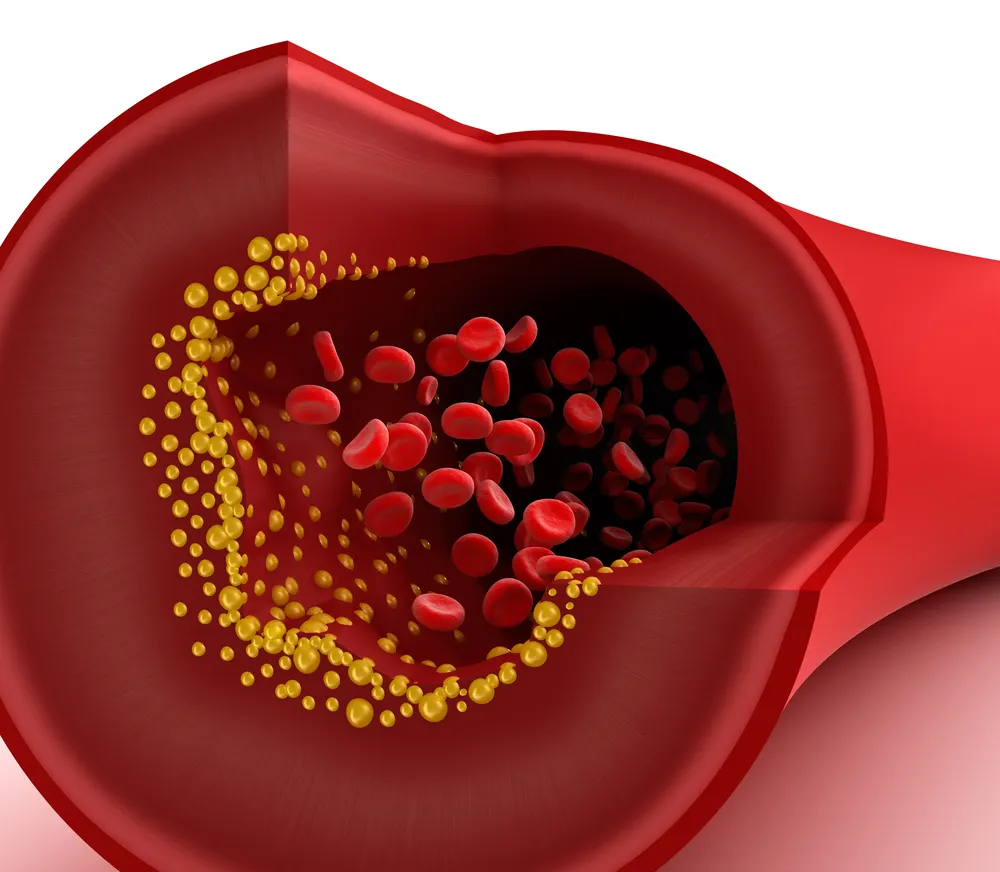Cholesterol Awareness Should Start Early In Life According To New Guidelines

It is a well-known fact that cholesterol can bring about a LOT of bad when it comes to our health. Constant exposure to it increases our risk of heart-related diseases and stroke. However, many people only start being more cautious about it when they reach a certain age, believing that it is no cause for worry if a person is younger. New scientific guidelines say otherwise, though. Proper cholesterol management should begin early on and needs to be a concern for everyone, regardless of age.
The stats don’t lie: About one out of three adults in the United States have a high level of bad cholesterol in their bodies, which is also the main factor for atherosclerosis or the narrowing of arteries due to fatty buildup. Globally, studies show that even with an increased risk of heart disease, people who were given drugs meant to lower LDL levels in the body showed positive results—effectively lowering their chances of developing heart disease or experiencing a stroke.
This new guideline published in the journal Circulation is a means for healthcare providers to prevent, diagnose, and treat problems related to high cholesterol. Behind this guideline is a panel of 23 different science and health experts and 11 different health organizations that listed different recommendations meant for people who have particular conditions and risks.
It has been made clear that the LDL cholesterol particle is at the core of this disease, but the guidelines also suggest exploring other risk-enhancing factors that might contribute to a person’s overall risk for the next 10 years. We all know that high blood sugar, high blood pressure, and smoking contribute greatly to increasing our risks—but did you know that your own family history and any other health conditions you have can also add to it?
Let’s take a closer look at the guidelines, shall we?
FOCUS ON LIFESTYLE
This points to eating healthier and adding more physical activity to your daily routine. Both have been proven to be effective when it comes to lowering the bad cholesterol or LDL levels in our bodies.
BE ALERT EARLY
Instead of waiting until you hit a certain age to start prevention, always take a “lifespan” approach when it comes to lowering your risk of heart disease and other related health problems. If your family has a history of it, the guide suggests testing children starting from the age of 2.
DON’T ASSUME
People who are over 20 and have not been diagnosed with cardiovascular disease should get a risk assessment every 4 to 6 years. This is to monitor their health and provide early treatment for any potential cholesterol-related disease. This is also the age group that tends to disregard their health the most—which can lead to undesirable consequences.
CONTINUOUS MONITORING
If you’re between the ages of 40 and 75, it is likely that you’ll be requiring medicine. There are also a number of different factors that directly affect your risk of developing cholesterol-related diseases. Take note of the following:
- High levels of triglycerides
- A history of heart disease or stroke in the family
- Chronic kidney disease
- Metabolic syndrome
- History of early menopause or pre-eclampsia
- Ethnicity
- Chronic inflammatory conditions
YOUR GENETICS MATTER
The fact is, some populations have a higher risk when it comes to certain medical conditions compared to others. There are ethnic and/or racial features that could also affect this so always talk to your doctor and get a risk assessment. Note that some of the available assessment tools aren’t always capable of providing accurate information for every type of individual or population.
“The truth about clinical medicine is there is no black and white. It’s all gray,” this is according to Lloyd-Jones, a cardiologist. This is also why there’s much emphasis on doctor-patient communications in the guidelines, especially when it comes to the possible risks and benefits of using drugs for therapy. Doctors are also advised to use a calculator when it comes to providing detailed assessments for their patient’s 10-year risk when it comes to heart disease. Treatment should also be personalized, according to this document.
Another thing to keep in mind, for patients who are unable to control their condition through exercise and diet, is that medication can be used to help with it. In particular, a cholesterol-reducing drug called statin is often prescribed. For those who are considered to be high risk, including patients who already have existing coronary heart disease, have very high cholesterol due to genetic conditions, and have experiences with strokes there are other types of medication that can be used—this includes PCSK9 inhibitors and ezetimibe.
For people who are between the ages of 20 to 39, the guidelines place emphasis on developing a healthier lifestyle, along with adding physical activity to their everyday routine and keeping up with a healthy diet. That said, the guidelines also remind people of this age group to never ignore their health as there are plenty of young adults who already have symptoms or are in the first stages of atherosclerosis.
However, it must also be said that because long-term research is still lacking for this age group, recommendations for the use of statin are only meant for those who are at a higher risk.
So, who falls under the high-risk group?
People 40 to 75 years of age, even those without heart disease, are categorized into four different classifications according to the guideline. These are: low, borderline, intermediate, and high.
If a person falls under the intermediate zone, or on the borderline, the guidelines recommend for doctors talk with their patients about the use and benefits of statin drugs—whilst also considering the possible risks involved in doing so. Now, if doubt remains over its use, doctors can also explore other options such as doing a CAC screening—this stands for coronary artery calcium and is basically a CT scan of the heart. This helps with determining just how much plaque has already built up within the arteries.
THE LIFESPAN APPROACH
As mentioned earlier, the guideline suggests taking precautions early on—even as early as 2 years old for children who have a family history of high cholesterol or early heart disease. As for children with no known risk factors, the guideline recommends getting tests between the ages of 9 and 11, then another between the ages of 17 and 21. This was designed to catch any potential risks early, so that treatment could be provided to make sure the person doesn’t develop the disease later on.
The new guidelines give importance to practicing a heart-healthy lifestyle even during one’s youth. By having the right information and knowledge, people should be able to maintain healthy cholesterol levels throughout their life. This is what the lifespan approach to cholesterol is all about. Pediatricians agree that creating the best environment and helping their patients make it into healthy adulthood and long life is their goal. And as we’ve all learned, people who have normal heart health from a young age do have better chances of making it into their 50s with normal cardiovascular health factors.
Many of us have experienced or heard of people losing loved ones at a young age due to cardiovascular diseases—but this need not be the reality for everyone. It is, however, something we can all learn from. Such was the case for Carl Korfmacher of Wisconsin who lost his father to a heart attack just before turning 37. Carl was only 10 at the time, but the experience changed his perspective when it comes to cholesterol and lifestyle. From then on, he continued to be cautious when it comes to diet, adding exercise to his routine, and even taking medication for high cholesterol.
NEVER TOO EARLY
When Carl’s own children turned 12 and 8, he had them tested too. Both had high cholesterol levels so the doctor gave them small doses of statin medicine—today, they are maintaining their healthy lifestyles well. What Carl’s experience teaches us is this: You won’t die just because you have high cholesterol—that alone is just one risk factor. What matters is what you do about it. If you’ll change your ways and pursue a healthier lifestyle or if you’ll stay stagnant despite the increased risk.
As per the guidelines, there are ways of preventing the worse from happening—however, we need to put in the effort in order to put ourselves on the right track. By treating potential risks early on, we can save ourselves from dying an early death due to cholesterol-related diseases. The guidelines don’t ask much, but by keeping what’s outlined in them in mind, we can effectively lower our risks and switch to a lifestyle that’ll benefit us in the long run.
Remember, it is never too early to get yourself assessed. Always take the lifespan approach when it comes to dealing with cholesterol and start living healthily today!
